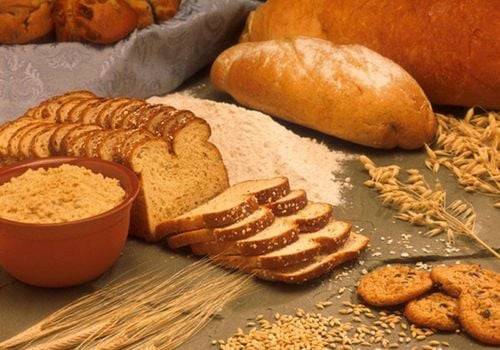This is an automatically translated article.
Between 12 and 36 months of age, toddlers will start to eat more solid foods. Learning about the type, quantity, and timing of foods to be given to children at this age is important to provide them with all the nutrients they need for their growth.
1. Guide to feeding babies from 12 to 24 months
Children between the ages of 12 and 36 months are learning to eat solid foods and are more active. Good nutrition gives children what they need for growth, health and the energy to play, move and learn. The best thing you can do is offer your child a variety of foods from each food group with different tastes, textures, and colors. Accordingly, you let your child decide on the quantity as well as his dishes.
In fact, between 12 and 24 months babies can already use a spoon, although it will take some time for them to master it. Here are some tips when giving solid foods to babies between 12 and 24 months old .
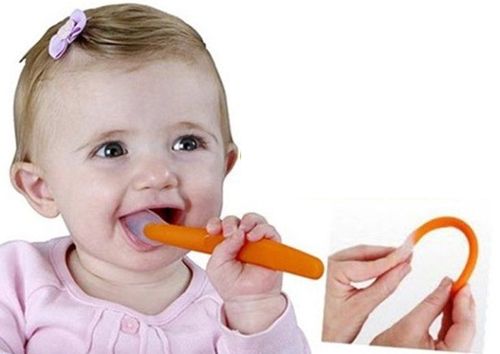
Trẻ từ 12 đến 24 tháng có thể ăn dặm đa dạng các món ăn hơn
1.1. Food for babies from 12 to 24 months
Some of the following foods are rated by experts as suitable for babies between 12 and 24 months old:
Whole milk: Whole milk and other dairy products such as pasteurized soft cheese, milk Sours and fresh cheese are a great source of energy and some nutrients for kids. Grains such as whole wheat bread, pasta, rice. Note that it is necessary to provide children with at least half of the total amount of whole grains that children need to ensure nutritional value. Fruits like watermelon, papaya, apricot, grapefruit... Vegetables: Broccoli and cauliflower cooked until tender are the top choices for babies at this stage. Protein-rich foods such as eggs, beans, tofu, butter, peanuts are spread thinly or meat is cut into small pieces for the child. If it's fish, make sure to remove all the bones. Honey: Children over one year old can already eat honey or some other allergenic foods.
1.2. How much do you feed your baby per day?
Below is an example of what a 12-24 month old baby should eat in a day. Different foods will require different amounts for your baby:
A cup of milk, or a cup of yogurt or 20-30 grams of cheese, 100 grams of cereal, of which at least half is cereal whole grain. Equivalent to 3 cups of instant cereal or one cup of pasta or half a bowl of rice or a slice of bread). A portion of fresh or canned fruit cut into bite-sized pieces. A small bowl of chopped and cooked vegetables (60 grams of protein is equivalent to two slices of sandwich meat, or about 2/3 chicken breast or half a can of canned tuna or half a cup of cooked dried beans or two eggs) .

Trẻ có thể rất thích thú với trái cây
1.3. Tips for babies 12-24 months old to eat solids
Experts once recommended that parents should not give young children eggs, fish or peanut products because children are more at risk of food allergies or more serious food poisoning. But the most recent studies from the American Academy of Pediatrics found no evidence to support these claims. For children with a history of allergies to certain foods or a family history of allergies to those foods, parents should discuss more with a nutritionist before deciding to give the child. try a new food. Your baby can still be fed but in gradually increased amounts and is closely monitored for reactions that occur after eating.
In addition suffocation remains a hazard for children of all ages. Therefore, parents need to know the foods that easily cause this condition and take appropriate precautions.
2. Instructions for feeding babies from 24-36 months old
In the period from 24-36 months, babies can already form certain eagernesses in choosing food for themselves. In addition, the baby can also use a spoon proficiently to scoop food on his own.
2.1. Food for babies from 24-36 months
Some of the following foods are recommended by experts for parents to feed their children aged 24-36 years, including:
Low-fat milk: Parents can switch their children to milk. low-fat or fat-free when your baby is two years old or older. In addition, parents can also consult experts about the types of milk that children can use at this stage. Other dairy products such as shredded cheese, low-fat yogurt, cottage cheese, pudding. Iron-fortified grains such as oats, barley, wheat, and mixed cereals. Other grains such as whole wheat bread, crackers, bagels, instant cereals, pasta, rice. Canned or chopped fresh fruits. Dried fruits, soaked until soft so that children do not choke when eating (such as apples, apricots, peaches, pears, prunes....) Vegetables of all kinds are cut into small pieces and cooked thoroughly. Protein: Protein for babies in the period 24-36 months is mainly provided from eggs, beans, peanut butter, thinly spread, all kinds of meat, chopped poultry, fish without bones or tofu. . Other food combinations like macaroni, cheese and casseroles

Trẻ từ 24-36 tháng tuổi được khuyến khích ăn các loại ngũ cốc như lúa mạch
2.2. How much do you feed your baby per day?
Below is an example of what a 24-36 month old baby should eat in a day. Different foods will require different amounts for your baby:
A cup of milk, or a cup of yogurt or 20-30 grams of cheese, 100 grams of cereal, of which at least half is cereal whole grain. Equivalent to 3 cups of instant cereal or one cup of pasta or half a bowl of rice or a slice of bread). A portion of fresh or canned fruit cut into bite-sized pieces. A small bowl of chopped and cooked vegetables (60 grams of protein is equivalent to two slices of sandwich meat, or about 2/3 chicken breast or half a can of canned tuna or half a cup of cooked dried beans or two eggs)
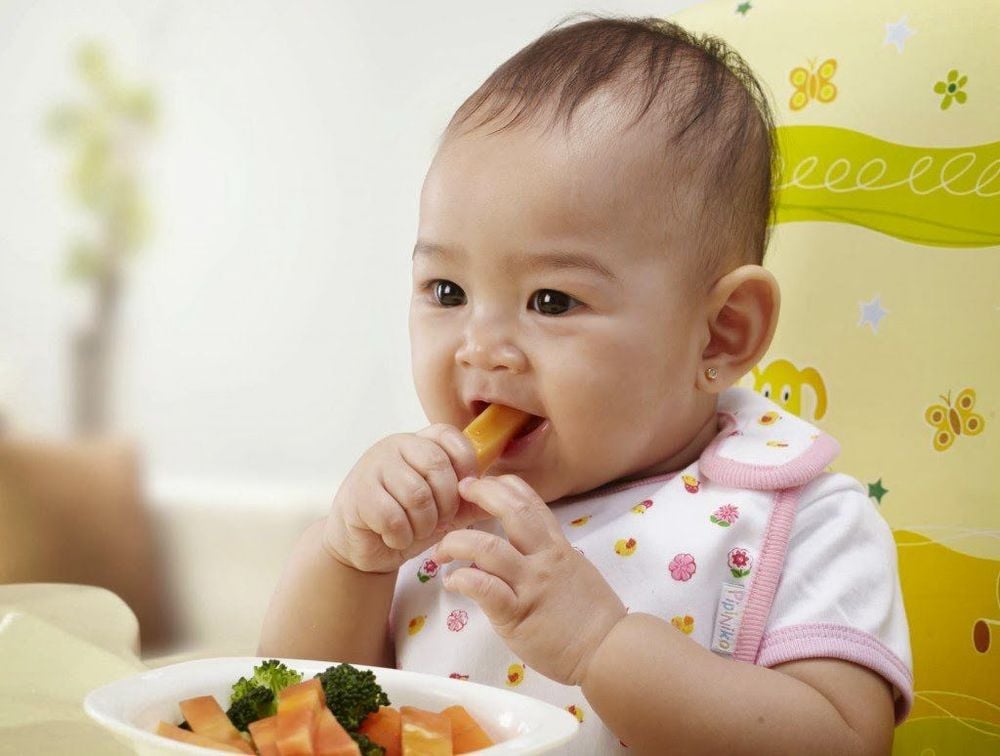
Số lượng thức ăn cho trẻ sẽ có khác nhau giữa các thực phẩm
2.3. Tips for feeding a 24-36 month old baby
Just like for babies 12-24 months old, experts once said that parents should not give their children eggs, fish or peanut products because of the risk of allergic reactions of these foods. . However, this view is no longer correct. If the child does not have a history of allergic reactions to strange foods, parents can completely feed their children the above foods.
At this age children also have a clear awareness of their preferences for foods. Let your child actively choose the foods he wants. Parents' job should only be to balance nutrition in foods and encourage children to choose healthy foods.
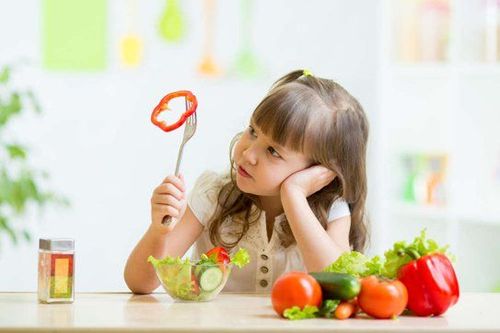
Ba mẹ nên để bé chủ động cho trẻ lựa chọn món ăn của mình
3. Guide to weaning for vegetarian children
For moms or young families who are vegetarian and want their kids to eat it too, they can still provide an infant or toddler with everything he or she needs for growth. The Academy of Nutrition and Dietetics and the American Academy of Pediatrics agree that vegetarian and vegan diets can be followed if well planned for infants and toddlers. Just be careful to make sure your baby is getting all of the following nutrients:
Vitamin B12 : Vegetarians and vegans can usually get vitamin B12 from foods like milk or eggs. Vegetarians can enjoy plant-based vitamin B12-rich beverages such as soy, cereal, and other meat substitutes. Vitamin D : Breastfed infants need about 400 units of recommended vitamin D per day from soy milk . Calcium: Children on a vegetarian diet may need to be given certain foods and drinks to supplement or fortify calcium as directed by a nutritionist. Zinc: Zinc is an important nutrient that helps strengthen the immune system. For children on a vegetarian diet, zinc can be obtained through a number of foods such as beans, cereals, milk and wheat germ. Iron: Plant-based iron can be found abundantly in cereals or other iron-fortified foods. In addition, it is necessary to eat with other vitamin C-rich foods such as oranges, tomatoes, and strawberries to improve the body's ability to absorb iron. Protein: Vegetarians can get protein from yogurt or to some extent from eggs. Vegetarians can get protein from plant sources like beans, whole grains, and soy milk. Fiber: The best sources of fiber for kids include breads, cereals, pasta, and other high-fat plant foods like avocados.
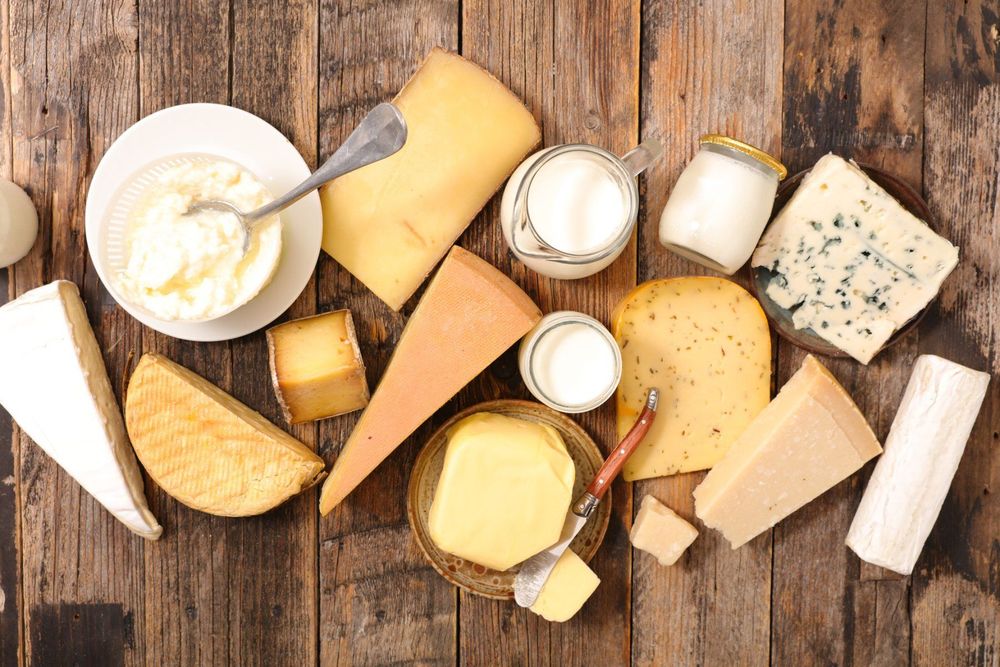
Các sản phẩm từ sữa sẽ tăng cường kẽm cho trẻ
The period from 12 to 36 months old is the period when the baby's digestive system has developed relatively fully to be suitable for many types of food. Some foods that were previously advised not to be eaten by children due to the risk of allergies, such as honey or cow's milk, can be used during this period. Babies aged 12-36 months have also developed a clear perception of what they want to eat. Your baby may eat more or less than before, but that's completely normal. What parents need to do is direct their children to a healthy diet to form good eating habits from a young age.
For children to be healthy and develop well, it is necessary to have a nutritious diet in terms of quantity and quality balance. If children are not provided with adequate and balanced nutrients, it will lead to diseases of excess or lack of nutrients, which adversely affect the comprehensive development of children in terms of physical, mental and motor skills.
The period of baby eating solid foods is an extremely important period to help children develop comprehensively. Children who do not eat properly are at risk of micro-mineral deficiencies causing anorexia, growth retardation, malabsorption,... In addition to the diet, parents should supplement children with supportive products containing lysine, essential micro-minerals and vitamins such as zinc, chromium, selenium, and B vitamins to help fully meet the nutritional needs of children. At the same time, these essential vitamins also support digestion, enhance nutrient absorption, help improve anorexia, and help children eat well.
Please regularly visit Vinmec.com website and update useful information to take care of your baby and family.
Reference sources: babycenter.com, finebaby.azurewebsites.net







